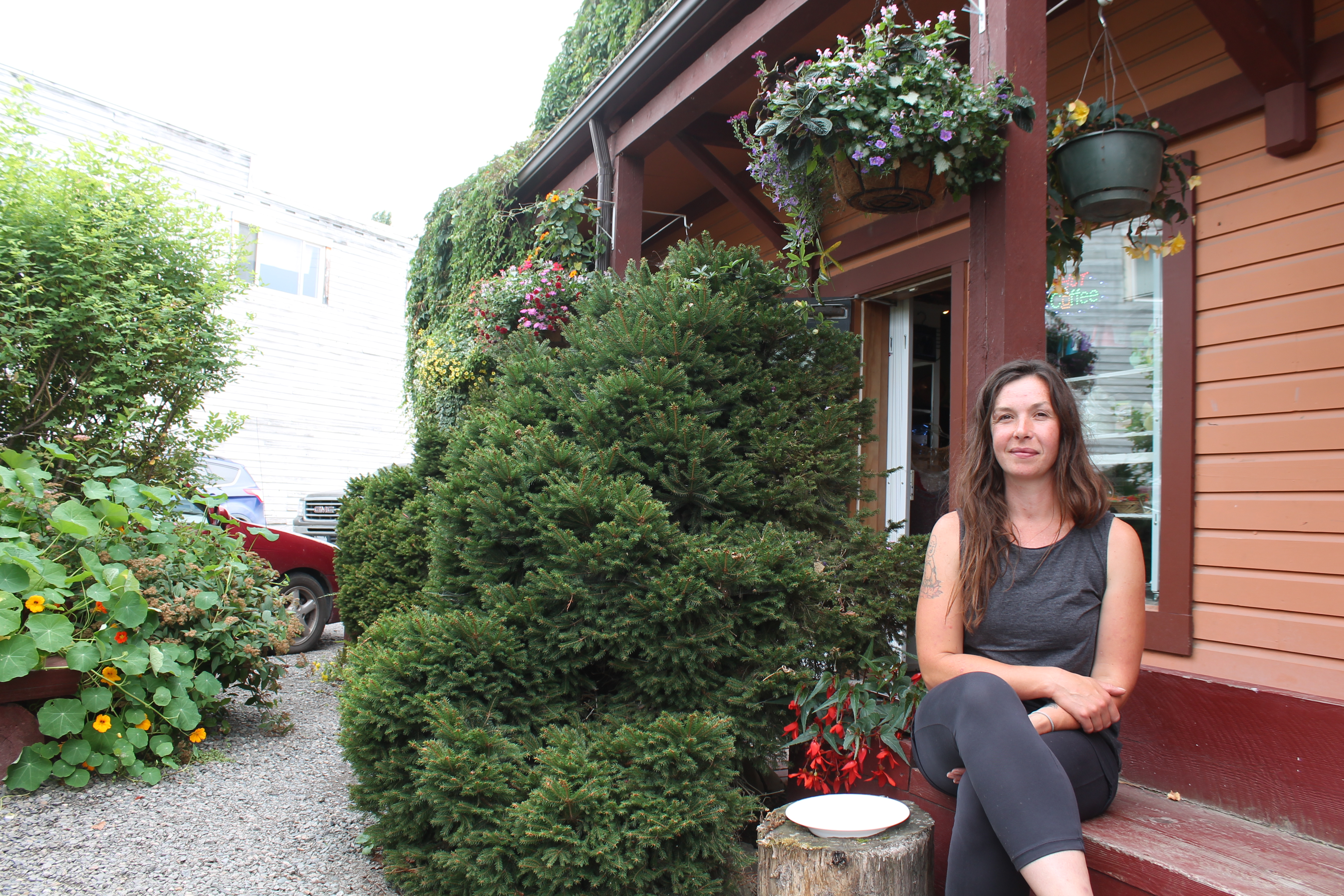[Editor’s note: Tyee education and youth reporter Katie Hyslop recently spent two weeks in British Columbia’s ruggedly beautiful, resource-rich and jobs-poor northwest, exploring both the promise of gas, oil and other mega-developments and their perils with dozens of teenagers and young adults. She’ll be reporting on what she learned over the next several days.]
I spent my second day in northwestern B.C. learning to raft the Bulkley River with Youth On Water’s five guides and 13 teenage campers.
My goal was to find out what the young people thought about the mega resource projects being proposed for the area (see my report on that today on The Tyee here.) The campers were there to learn teamwork and rafting skills — and have fun with friends.
But without Youth On Water coordinator Anissa Watson, none of us would have been there. I sat down with Watson the following day to find out more about this unique summer camp, operated by the environmental non-profit Skeena Watershed Conservation Coalition.
The Tyee: When did Youth On Water (YOW) start?
Anissa Watson: This is its seventh year, so 2009, I guess.
Where did the idea come from?
It was started by a fellow named Chris Gee, from Terrace. His interest was mainly training youth to have the hard skills so they could get out and enjoy the rivers on their own, and share that experience and love with their community and family.
Our experience taking people out on the river is that when they have a personal connection and relationship to it, people are really motivated to care for their landscape. So that’s one of the goals, to provide as much education and information as the youth are interested in.
But then also to facilitate these experiences out in the watershed, so that they can make their own decisions.
How many youth have gone through the program?
Oh gosh. Every year we end up with about 150. Some are repeats, so it’s probably about 75 per cent new participants each year. After seven years it’s close to 1,000, if not more.
What are your current goals?
We’re seeing increased interest to learn the hard river-rafting skills. The vision we’ve been mulling is training and facilitating youth to employ themselves [to teach rafting], or to get other people out on the river.
Ideally, in another five years this program is run entirely by highly skilled, trained youth from this community, and we’re able to support them as an organization but it’s a youth-direct-to-youth program.
What’s stopping YOW from expanding?
Our organizational capacity to manage expansion, making sure that we have the infrastructure and support and communication systems in order to do it.
We’re finding as we’re growing, even in the last two seasons, it’s like, “Okay, how can we contain the program to something that’s manageable? And then how can we put systems in place in order to expand it?”
We’ve tried to be really cautious and not overly enthusiastic, but it’s not easy.
What do you see in 20 years for the youth you work with?
My hopeful vision is that they have a really solid voice in what their future looks like, and feel empowered enough to use it.
I really feel our communities here are moving in a positive direction to be resilient to change. So I feel a lot of the youth [will] be generally in a good place, that the community will still be able to support them.
I do see some struggle and strife.
A couple of years ago, the fish return was not good, and that’s something a lot of our youth are facing: changes in the river. The river has been really warm this year, river levels have been really low early. Just those uncertain future pieces: are they going to be able to sustain themselves like their families have, and will they have the skills and knowledge to do so?
My hope is that the youth in the YOW program will have the ability to still get out on the river and share this river.
What still needs to be done to achieve a future where young people have a voice?
I think a big piece is looking at the systems that are preventing them from having a voice, and find ways to either change them, or encourage active participation outside those systems.
I can’t speak 100 per cent on this, but the feast hall system here is [the First Nation] method of governance. A lot of big decisions are made in the feast hall, and everyone has a role and a place there. Even down to tiny babies, there are rules that are expected to be observed. Denzel [Sutherland-Wilson, a YOW guide] and Kolin [Sutherland-Wilson, a YOW junior guide] practice that a lot and recognize their role in it, but a lot of youth [do] not. So I think that’s really important to engage.
Youth here face a ton of social issues and are really, really struggling. A lot are surviving from day to day. I think it’s important as the adults of the organizations that are here to be responsible for them and to them, that we’re really working hard to address those [struggles] as much as possible; creating safe spaces and opportunities for youth to get out, be themselves and relax, or to learn about decision-making processes and participate in them. To not always be [just] surviving. ![]()
Read more: Rights + Justice

















Tyee Commenting Guidelines
Comments that violate guidelines risk being deleted, and violations may result in a temporary or permanent user ban. Maintain the spirit of good conversation to stay in the discussion.
*Please note The Tyee is not a forum for spreading misinformation about COVID-19, denying its existence or minimizing its risk to public health.
Do:
Do not: